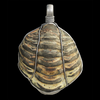See New Pictures of WWII Code-Breaking Computer Colossus

Recently released picture of the Colossus. (source: GCHQ)
Britain’s Government Communications Headquarters has released new pictures of the Colossus, a revolutionary computer that deciphered Nazi codes during World War Two. Check them out here!
The Colossus prototype was built at the Post Office Research Laboratories by Thomas Flowers, a telephone engineer working for Bletchley Park, the nerve center of the Allies’ code-breaking work during the war. It automated the decryption of the telegrams sent with the Lorenz SZ42, used by Nazi high officials, gathering intelligence that saved innumerable lives and helped shorten the war. The Colossus’ use at Bletchley was a state secret, only officially acknowledged in 2000 by the GCHQ. With the release of these pictures, we know just a little bit more about one of the most important computers ever built.
The Lorenz SZ42 cipher machine encrypted its message by including randomly generated characters intermixed with the message’s characters. This made the messages impossible to break, but only if each message used a different preset of Lorenz’s twelve code wheels. If two messages with the same preset (called a depth) were intercepted, the obscuring characters could be identified and the code broken. The only problem was that all Lorenz operators knew to use a different preset for each message.

Code Breakers at work in Bletchley Park's Hut 6. (source: Encyclopædia Britannica)
The Nazi’s fatal mistake came on August 30, 1941. A message from occupied Athens to Vienna failed and was sent again, using the same preset. On the second attempt, the machine operator wrote a condensed version of the previous message, producing a depth. Both messages were recorded by a radio intercept station at Knockholt in southern England and were quickly passed on to Bletchley Park. Once there, Brigadier John Tiltman was able to identify the obscuring pattern used in both messages. With this, codebreaker William Tutte and his team reverse-engineered Lorenz’s encoding pattern, breaking the code.
Breaking Lorenz codes by hand could take weeks, but with Colossus, the process was automated. The computer’s internal memory was maintained by 1,500 vacuum tubes and used electronic ring circuits to synchronize the machine’s two data inputs: the broken wheel pattern codes and the raw encrypted messages. Now codes could be broken in mere hours, providing invaluable intelligence, including for the D-Day invasion. Work from Colossus also helped spawn Alan Turing’s bombe, used to break the Enigma code, another breakthrough both in the fight against the Nazis and in computer technology.
Want to read about another revolutionary computer? Check out our article on the Cray-1, or browse our collection of Cray-1 computer chips!
Read More!
Rojas R, Hashagen U. The First Computers: History and Architectures. MIT Press; 2002.
Shipley H. Turing: Colossus Computer Revisited. Nature (London). 2012;483(7389):275-275. doi:10.1038/483275b
Featured Product
Magma Ocean - Isua Greenstone Belt - 3.6 Billion Years Old
Cool Things!

Scientists Discover First Ever Ancient Roman Trilobite!
It’s well known among archaeologists that the ancient Romans had a reverence for fossils. For example, it is thought they believed mammoth bones and teeth were those of dragons and cyclopes, and thus, these items were often displayed in places of power. However, researchers in Spain recently uncovered an exceedingly rare Roman fossil artifact from an unlikely place.

Denver Museum Finds Dinosaurs in their Backyard!
For patrons of a popular Denver museum, newly discovered dinosaur fossils are quite literally in their backyard!

Neolithic Vegetarians: Learn About the Wooden Tools Used by Early Humans!
When you think of the Stone Age, scenes of Neanderthals chasing down great beasts of old for food and furs might come to mind. Many studies have shown the invention and development of stone tools were essential to early humans’ efforts to hunt animals, but according to a recent study, that perspective may have an overbearing presence in the perception of the Stone Age.
Specimen Deep Dives

The Hollywood Sign: The Story of a City's Symbol Hollywoodland

Building Disneyland

When the Sky Split in Two: The Tunguska Event
Long Form Articles

The Artist Behind the Macintosh: Susan Kare and Apple Computers
While the two Steves, Jobs and Wozniak, are the most well known faces behind Apple computers, equally important to the products and culture of the company were those who crafted the experience of using their computers through design. The most notable of these visual architects was Susan Kare, a designer responsible for “humanizing” Macintosh computers.

Can I Lick It? Yes You Can!
Have you ever been unable to tell if a fossil was really a fossil, but you were too embarrassed to admit it? Have you ever wanted to lick a fossil just because, but you didn’t want to risk judgment from your peers? Well, good news! You can kill two birds with one stone! Licking a fossil can actually help you determine if it’s the real deal or just another rock.

Is It Legal To Own a Meteorite: How to Start Your Outer Space Collection!
Meteorites are some of the rarest geological specimens to be found on Earth. Of course, since these stones are not of our world, purchasing them can sometimes be a confusing process. Is it legal to own a meteorite? In short, yes! Read on for help starting your cosmic collection!










